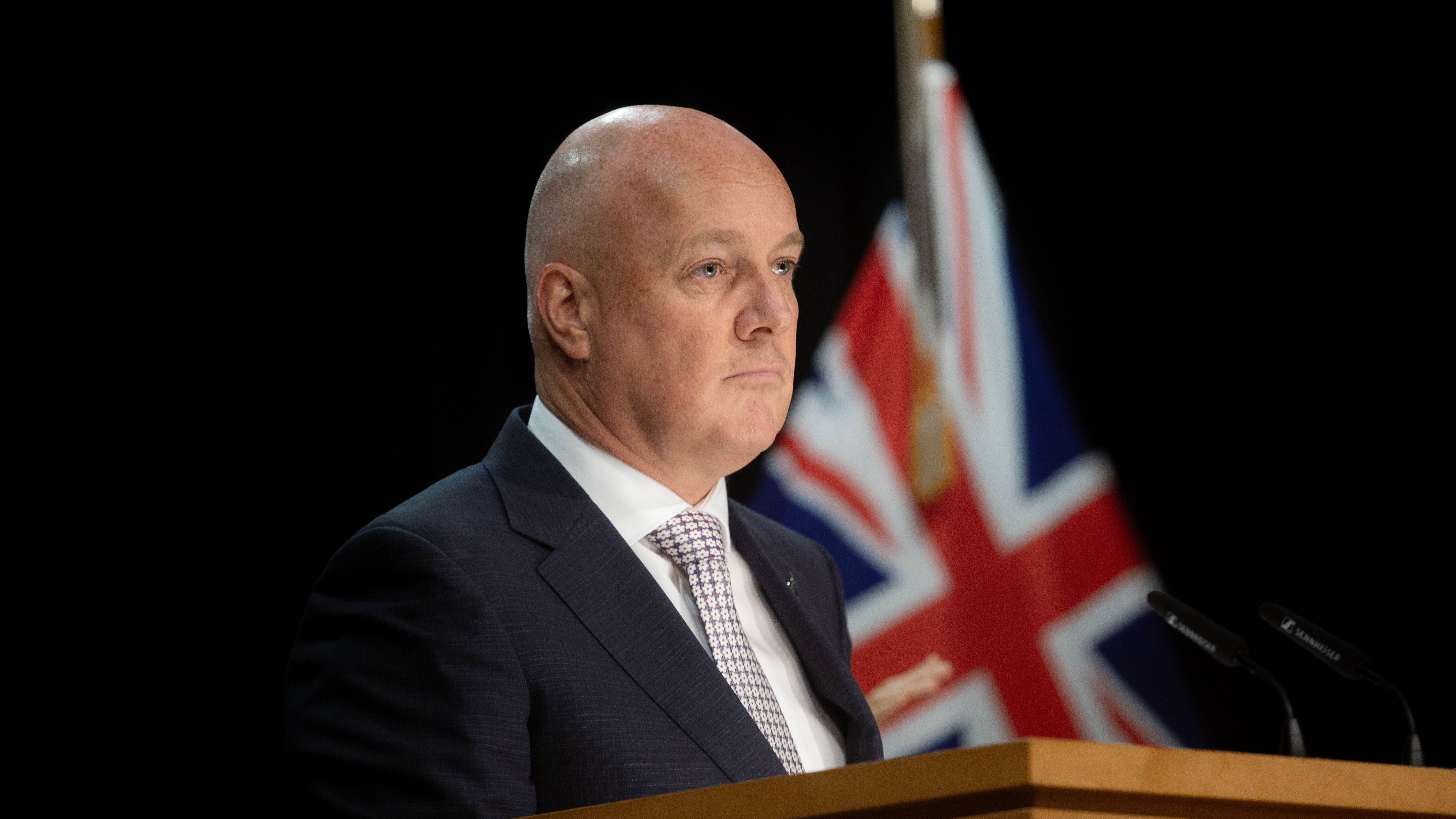
The data that comes with energy is big and fragmented.
It means some energy companies are pouring time into manually manipulating data, wrangling things on spreadsheets and doing queries on big databases that they can’t scale, Jessica Venning-Bryan says.
To help with this Venning-Bryan and Simon Pohlen have created energy tech company Factor.
Neither Venning-Bryan nor Pohlen are strangers to the energy sector. They were part of the founding team at Flick Electric and both have worked at Flux Federation.
The business-to-business company uses plug-and-play automation tools, with the help of AI, to support companies with energy pricing.
With the number of devices coming onto the stream - like batteries, solar rays and micro wind - along with more markets emerging such as flexibility markets, there’s more data that is becoming more complex and diverse, and it’s arriving faster, Factor's co-founder and chief executive Venning-Bryan says.
And customer expectations about how utilities price their products are growing.

“We knew this problem of pricing and forecasting was hard already and was going to get harder,” Venning-Bryan says.
When people ask Venning-Bryan how these prices are currently collected, she says:
“If you’re a residential customer, most utilities will have a pretty standard sort of price book, so when they go to offer you a price when you join them, that’s pretty simple. It’s not particularly complex and most households broadly kind of look the same.
“If you think about the commercial sector, a farm uses energy completely differently to how a factory would use it or a school or a hospital or a McDonald’s or a water treatment plant, so all of those commercial applications use energy in really different ways.
“They use different amounts, they use them at different times of day, and then if you layer onto that, they are now investing themselves in different types of resources … a utility would have to think about those types of facilities or businesses quite differently.”
And she uses an example of a dairy farm with micro wind to help highlight this more:
“If you were that farm - imagine it’s a dairy farm - and you contact the utility and say to them ‘I’d like you to give me a price for my energy use on my farm,’ [the utility] has got to figure out a couple of things.”
It needs to figure out how much energy the turbo is going to make, which Venning-Bryan says on its own is quite hard.
“If you’ve developed a big wind farm as a big developer, you’ve invested lots of money and lots of modelling so you have a pretty good idea of what that wind production is going to look like."
But if it's one turbine on a farm, then you've got no idea, she says, and you've got to figure that part out first.
"You’ve got to forecast how much wind do you think that particular turbine on that farm in that location is going to produce, and then you have to value it against when you need that energy, so if it’s just producing energy at times of day that you have lots of energy, then you probably don’t value it as highly.
“If it’s producing at times of day where you do need it, you’ll probably value it more highly so you can see that it's complex.”
Then you move to the dairy shed.
Most dairy farms would milk twice a day and maybe once in a day in the off-season. You have to figure out how much is needed to recover energy for the milking shed when it’s actually milking at peak times, Venning-Bryan says, but also have to allow for the off-season which is once a day.
And if the farmer had solar panels but was thinking about buying a battery, then the utility would have to forecast the use of the home and what it would look like with a battery if there was load shifting.

Venning-Bryan says figuring out all of those things and coming back to the customer would take a few weeks because it goes to a team that is using spreadsheets, databases and data queries to try and figure that out.
“What we do is we integrate with the software that the service and sales team would be using. You push a button that says ‘use Factor’ and it figures all of that out using data provided by the utility in about 20 seconds.”
“It’s doing these very complex, large forecasting tasks and drawing together all of the cost inputs to calculate a sensible price very quickly.
“For a utility doing that at scale across thousands and thousands of customers … that’s not really tenable doing that manually any more and that’s why there is an opportunity for us," Venning-Bryan says.

So far, they’ve secured $3 million in investment from New Zealand and Australian investors.
New Zealand’s energy market ‘broken’ and dysfunctional’
Businesses and consumer groups recently called on Prime Minister Christopher Luxon to fix the country’s “broken” energy market.
In an open letter, the groups wrote: “Our dysfunctional electricity market is holding back New Zealand’s productivity, restricting our international competitiveness and driving up the cost of living.”
The group called for “comprehensive reform” that addresses “both the immediate supply challenges and the underlying structural problems that created them”.
There has been some movement - on Friday, the Electricity Authority (EA) announced changes it says would make it easier and faster to connect to the electricity network.
EA’s general manager of networks and systems change Tim Sparks says “line companies must offer the least-cost, technically acceptable solution”.
"Any extra costs to enhance the connection - for example running the connection underground - will be paid for by whoever requested it. This ensures people aren’t paying for other network costs they didn’t ask for."
The EA is also introducing processes for larger users wanting to connect - such as an EV charge point operator or a public transport operator electrifying its fleet - including setting timeframes for decisions.

Alongside this, the EA had announced on Wednesday that large retailers with 5% or more market share will have to offer a pricing plan that gives consumers rates for off-peak electricity by June 30, 2026.
Not all companies offer a rebate to households who supply power to the network from small-scale generation systems like rooftop solar and batteries, the EA says, so by July 1, 2026, energy companies who don't offer plans that offer "fair rates" for power sold to the network at peak times will now have to pay these households.
Energy Minister Simon Watts welcomed these changes on Wednesday, saying the Government is working on a review of the electricity sector with a focus on making sure New Zealanders get a “fair price and aren’t hit in the pockets, and on addressing energy shortages”.
‘We have slowed down’
New Zealand was initially leading the way in terms of digitisation because smart meters were implemented early on, Venning-Bryan says.
“The way we implemented them actually was really successful and, I would say, world-leading.”
New Zealand has a high smart meter penetration, which is impressive globally, she says.
“I would also say though that since then, we have slowed down and I think we’ve become a bit apathetic about the energy transition because we have this really heavy penetration of renewable energy.”
Venning-Bryan thinks there’s a degree of apathy about the need to keep going.
“As a result, we haven’t invested in a number of the market mechanisms that we are seeing offshore that do create this more participatory energy system.”
In places like the UK, France and Texas, there are market mechanisms rewarding people for reducing demand. “That’s the sort of thing that we could be doing here to manage our peak demand.”
There are markets that have incentives for investing in solar and New Zealand had an incentive for investing in electric vehicles, but that was discontinued, she says.
“These are things that are very common in markets across the developed world and we don’t do them here. I think that is slowing our transition.
“I think we need to not rest on our laurels about our renewable base and actually be really ambitious about what a just and reliable and clean energy future for New Zealand looks like.”
7 Comments
If Factors models produce reliable and realistic data their services will be be very useful.
Lets hope that 'Energy Minister Simon Watts welcomed these changes on Wednesday, saying the Government is working on a review of the electricity sector with a focus on making sure New Zealanders get a “fair price and aren’t hit in the pockets, and on addressing energy shortages”.' is more than 'is working on a review'.
If you are serious about stability and lower prices - nationalize the electricity network. We would immediately save billions of dollars every year in shareholder dividend payments.
Make electricity generation a nationalized utility managed by the state for the express purpose of supporting the broader economy - businesses success and the needs of the general population. Like the public health system.
Advise current electricity network shareholders during an election campaign of a fixed market value set by parliament and not the market - recommend a voluntary market hold to retain existing value.
You DO so churn the mantra.
Reminds me of Jack Lee and Doc MacMillan.
Energy underwrites money, 100%. There are lag-times, but it does.
It follows that the problem is the reducing quality of the remaining fossil energy - and remember that without fossil energy, so-called renewable energy doesn't happen (again there will be a lag-time, as already-built dams, panels and windmills decay. That trend will indeed invalidate clip-the-ticket activities - profit-taking, interest-charging - but it also means that the complexity which is national-level governance, will be unmaintainable. As will the complex tech these folk are peddling.
Energy is an economic resource that is enabled and utilized by the creation of new money (government spending). Electricity generation and networks were not built or established by the private sector. They were built by the pre and post war governments using fiscal policy not private sector investors.
Since privatization of the market generation capacity has stalled. Why? What is the purpose of under supplying the market and sitting on consents for new generation capacity for decades without acting?
Not sure what you mean about renewable energy not happening without fossil fuel. Fossil fuel is critical to our current economy and production but it will be replaced over time with better technology. Just like horses were replaced by fossil fuel in the past.
Lol. "In places like the UK, France and Texas, there are market mechanisms rewarding people for reducing demand. “That’s the sort of thing that we could be doing here to manage our peak demand.”
Turn your heater off granny and f*cking freeze to death. This actually happens in the UK.

We welcome your comments below. If you are not already registered, please register to comment
Remember we welcome robust, respectful and insightful debate. We don't welcome abusive or defamatory comments and will de-register those repeatedly making such comments. Our current comment policy is here.